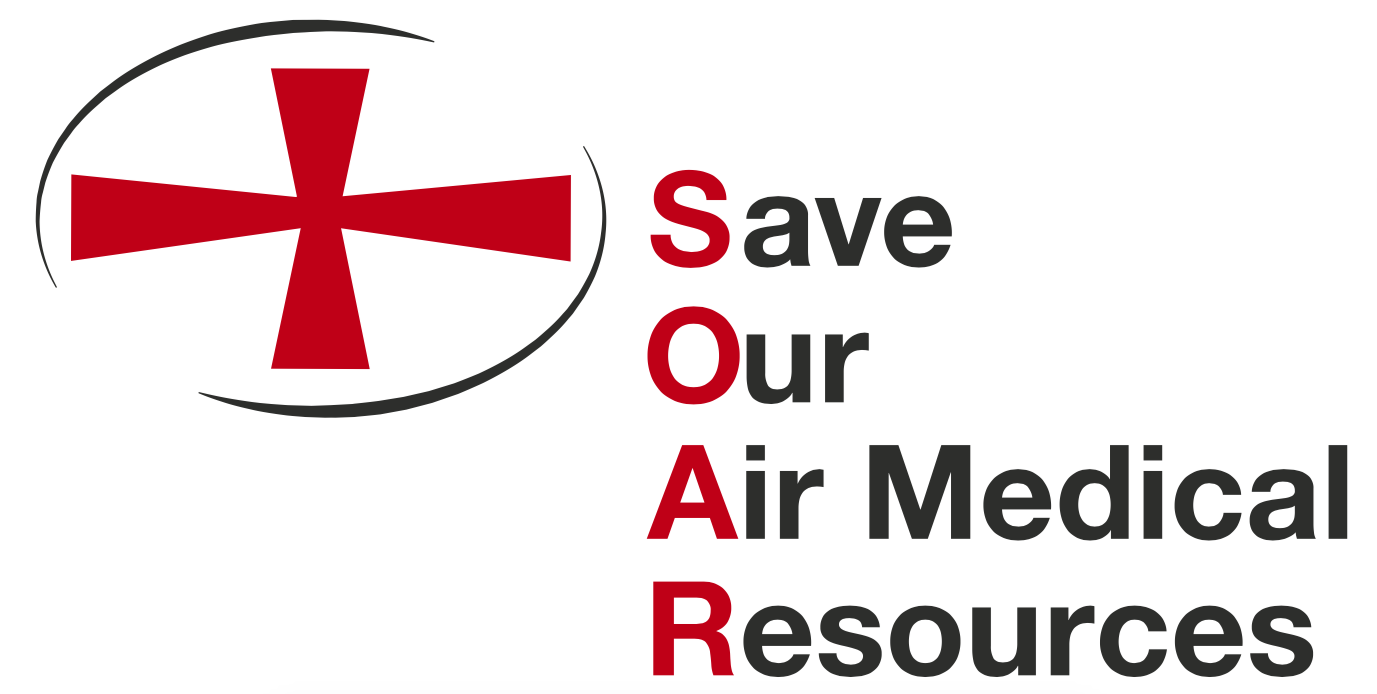By Carter Johnson, national spokesperson for the Save Our Air Medical Resources (SOAR) campaign
Contact: media@soarcampaign.com
As America battles the global health crisis that has emerged from the rampant spread of COVID-19, Americans are showing their appreciation for the first responders on the frontlines saving lives. But it’s not just with nightly cheers for health care workers – Congress has also realized the urgent need to support this essential industry, earmarking $100 billion from the Coronavirus Aid, Relief, and Economic Security (CARES) Act to provide an influx of money to hospitals and other health care entities as they combat the pandemic.
Air ambulances are a vital part of ensuring access to emergency care in rural America, where hospital closures have left millions living an hour or more away from an emergency room or trauma center. As the coronavirus spreads inland to rural communities, air ambulances, equipped with ventilators and able to quickly deliver intensive care level patients to the most appropriate health care facility, are more important now than ever before.
As Congress and the administration continue to distribute emergency funding to health care providers on the frontlines in the battle against COVID-19, they must not leave air medical providers behind. The industry is facing unprecedented strain and needs the government’s support to continue providing critical, life-saving care. To do otherwise would be a grave mistake.
Thankfully, the Trump Administration recently reversed its decision and agreed to include air medical providers as eligible for reimbursement from the Public Health and Social Emergency Fund as compensation for treating uninsured COVID-19 patients. Yet while policymakers have responded to many of the needs of the health care community and have offered initial support to providers, including air ambulances, the payments do not reflect the significant costs and lost revenue facing air ambulance providers and suppliers in combating the COVID-19 public health emergency.
Early estimates indicate that the air medical industry has already transferred more than 1,500 confirmed and suspected COVID-19 patients. These are individuals with some of the most severe symptoms, such as respiratory distress, who do not have a second to spare and need immediate transport staffed by doctors and nurses who can treat them in the air.
The air ambulance industry is investing significant resources to combat the ongoing and predicted challenges of COVID-19, including investing in additional Personal Protective Equipment (PPE). At the same time, due to the impact of the stay-at-home orders people delaying emergency care and massive business closures, air providers, particularly in rural areas, are experiencing significant decreases in transports, adding additional cost pressures to these most critical areas. The Association of Air Medical Services (AAMS), in a letter to Health and Human Services (HHS) Secretary Alex Azar, has requested additional financial support to ensure the sustainability of the air ambulance community through the next six months, enabling providers to respond to critically ill patients.
If the coronavirus outbreak worsens and hospitals resort to furloughing employees due to their own financial challenges, air ambulances will be necessary not just to transport rural patients to hospitals, but to transport patients between facilities, as ICUs in underserved rural areas and urban hotspots may not have enough ventilators or beds to handle the influx of coronavirus cases. This happened recently in New York City, where a hospital evacuated 28 intubated patients in one night using air ambulances when its piped oxygen system became overwhelmed.
Compounding the challenges faced by air medical providers responding to the pandemic, over 75 percent of patients treated by air medical providers are either uninsured or have government insurance. Medicare and Medicaid reimbursement rates fall far short of the actual cost of service.
While the administration’s reversal on funding for uninsured patients is essential to the survival of the industry, we are not out of the woods. Air medical services are facing unprecedented strain and need the government’s support to continue providing critical, life-saving care. To turn the other way would be a grave mistake.

